How do you cook perfect pasta?
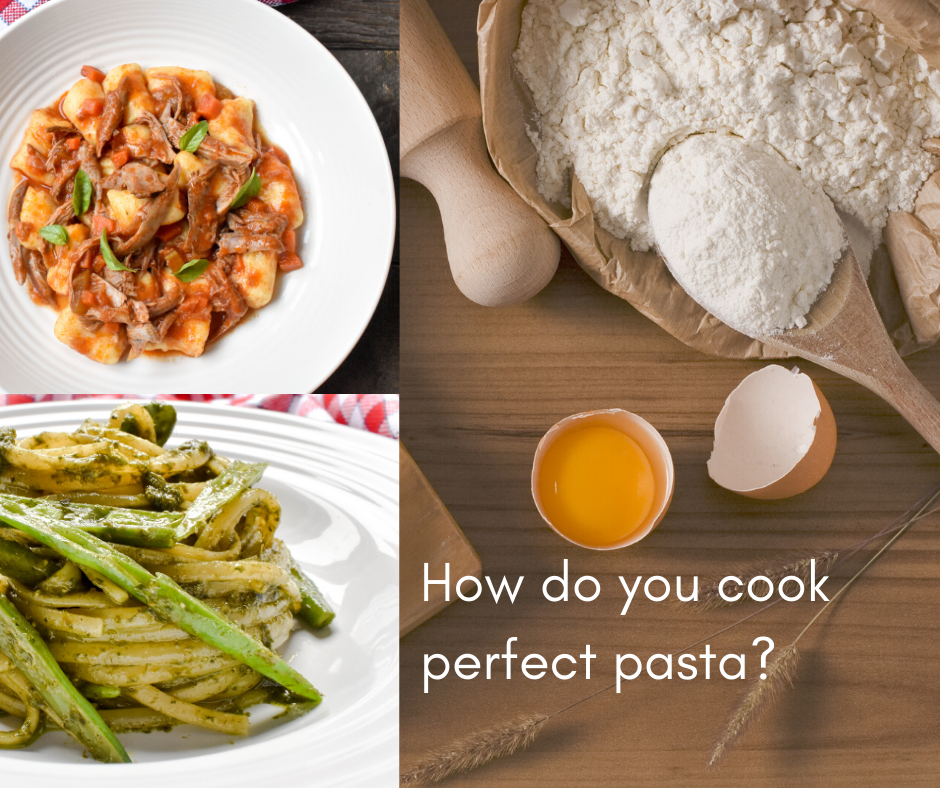
What’s the first thing that comes to mind when you think of Italian food? I am guessing it would be pasta and for very good reason – pasta is a staple of Italian cuisine. Pasta was believed to have originated in Sicilia (Sicily), in 1154. When it comes to pasta, Italy is the largest producer and consumer. Italians consume an average of 26 kilograms of pasta per person each year with more than 60% consuming pasta daily. This is six times the average consumption in Australia and five times the consumption of pasta in the world.
Why do we love pasta so much? Pasta is very versatile – it can be served as an entrée before a main course, in soups, as a main course on its own or served as a salad.
There are two broad categories of pasta: dried pasta, known in Italy as ‘pasta secca’ and fresh pasta, known as ‘pasta fresca’. Dried and fresh pasta come in a variety of shapes and sizes. Did you know that there are over 300 different pasta shapes (formati di pasta)? There are also over 1300 different names and variations of pasta shapes depending upon the town and region. For example, the popular pasta form ‘Fusilli’, a corkscrew-shaped pasta, has variants that are hollow, called ‘Fusilli Bucati’ and a long variant ‘Fusilli Lunghi’. There are four pasta shapes that most Italians have in their pantry at any given time. Can you guess which ones they are? Spaghetti, penne, fusilli and rigatoni. How do you cook perfect pasta like our Italian Nonnas?
When it comes to cooking pasta, have you put much thought into which pot to use, how much water to boil or how much and when to add salt? These questions really count. Here are the secrets to cook pasta perfectly ‘al dente’, every single time, just like our Italian Nonnas:
Step 1: Use a large pot to cook the pasta
If you are thinking of using a small pot that the pasta barely fits into – think again. You need to use a large pot with an abundant amount of water so that the pasta is fully submerged and has space to cook in. There is a 10:100:1000 rule which says to use 10 grams of salt (1 tablespoon) per 100 grams of pasta in 1000ml (1 litre) of water. While this is a good guide, you may need more or less water depending on the pasta shape. E.g. you will need more for spaghetti or other long pasta shapes while other pasta shapes may not require quite this much. We’ll talk about salting the water next. Place the large pot on high heat and bring to a rolling boil.
Step 2: Salt the water
Once the water has reached boiling point and I am talking about a full, rolling boil, add the salt. The boiling water will dissolve the salt quickly. If you add the salt to cold water, it will take longer to reach boiling point. Always add good quality sea salt. If you were thinking about skipping this step and seasoning your pasta later on, think again. Cooking the pasta in salted water allows it to absorb the salt as it cooks, one of the secrets to make amazing pasta. The amount of salt you use is always related to the amount of water. I’ll admit that I don’t measure the salt in my pasta water. I just add enough to make the water taste well-seasoned. You can use the 10:100:1000 rule to be sure which means 40g of salt for 400g of pasta per 4 litres of water. After adding the salt, remember to wait for the water to once again reach the boil (2-3 minutes) before dropping your pasta into the water.
Step 3: What portion of pasta per person?
You may notice that I have allowed a portion of 100g of pasta per person in my recipes. This is a very generous portion which really should be closer to 80g pf pasta per person but depends on your appetite and on the sauce. When serving pasta with a rich, meaty sauce you may wish to reduce the portion to 80g per person and increase the portion to 100g per person when cooking a lighter vegetable-based pasta. The pasta should be dropped in the boiling water all at once. The only exception to this is when cooking large quantities of gnocchi or fresh agnolotti (or other filled pasta) which requires to be cooked in batches. These types of pasta will rise and float to the surface when ready. Use a ‘cucchiaio di legno’ (wooden spoon) to stir the pasta once you have added it to the water.
Step 4: Should you place oil in the pasta cooking water?
When cooking dried pasta, I don’t recommend adding oil to the pasta cooking water. This is because the oil leaves a coating over the pasta that prevents the sauce from sticking to it. There is one exception to this rule, however. Fresh or home-made long pasta shapes such as tagliatelle, Pappardelle or spaghetti pasta benefit from the addition of a drizzle of extra virgin olive oil to the pasta cooking water. The purpose of the oil is to prevent the pasta from sticking together while cooking.
Step 5: The cooking of the pasta
Pasta is not something that you can set and forget unless you like mushy pasta! Cooking the perfect pasta means cooking it ‘al dente’. Al dente literally means ‘to the tooth’ in Italian and refers to pasta that is cooked but firm to the bite. So what is the hype about cooking pasta al dente? It tastes better and improves the nutritional value. Al dente pasta can be digested more quickly and has a lower glycemic index (GI) than overcooked pasta which has a greater impact on your blood sugar levels. That’s a good enough reason for all of us, I think!
Al dente is different with fresh pasta than with dried pasta. Fresh pasta will only take 1 ½ minutes to cook and even so it is fresh, the cooked pasta should still have some bite to it. For dried pasta, use the cooking time specified in pasta packet instructions as a semi reliable guide. Pasta cooking time varies with the quality of the grain and the size of the pasta dough. The better the quality of the grain and the processing of the pasta, the longer the cooking time. For best results, stir the pasta from time to time to prevent it from sticking together. Also check the pasta 2 minutes before the cooking time suggested on pasta packet instructions. To do this, use tongs to pick out a strand or a few pasta shapes. If not cooked, test again in 30 seconds to 1 minute and continue to test until perfectly al dente.
Step 6: Drain the pasta
While the pasta is cooking, ‘prendi lo scolapasta’ (get the colander) and place in the kitchen sink. Just before draining the pasta, reserve a few ladlefuls of the pasta cooking water. This can be handy to add moisture and really bind the pasta and sauce together. When the pasta is al dente, toss it all at once into the colander. Never add cold water to the pasta to stop the cooking – I repeat, never add cold water.
Step 7: Add the final touches to serve the pasta
The pasta is now ready to toss through your favourite sauce. I have said this in my previously blog, but I am going to say it again anyway as it is very important. You don’t serve plain pasta on a plate with a big ladleful of sauce poured over the centre. Instead, after you have drained the pasta, add it to the stockpot with your prepared ragù or sauce and toss to combine. Why? Coating the pasta in sauce adds superior flavour. If you have never eaten pasta this way, start now as you are missing out! Once you have combined the pasta and sauce, some pasta dishes such as Carbonara and Amatriciana benefit from the addition of pasta cooking water to moisten the sauce.
Step 8: How to complete the perfect pasta dish?
What is the icing on the top when it comes to pasta? It could be a sprinkling of fresh herbs and a gentle toss of the pasta compliments the flavours and really elevates your pasta to another level. Many people make the mistake of cooking the pasta with the herbs however all the fragrance is lost with the cooking. Popular herbs include flat-leaf parsley, basil and mint and depend on the pasta dish.
Many pasta dishes also benefit from a fresh grating of Parmigiano Reggiano, Grana Padano or Aged Pecorino (sheep’s milk) cheese on top. Not all pastas are enriched with the addition of cheese, however. You may be surprised to hear this as there are people that sprinkle cheese on all pastas. As a general rule, pasta dishes that contain fish or seafood should not be served with a grating of cheese.
Delicious pasta recipes
Now that you have the eight steps to cook pasta perfectly, it is time to cook one of these four delicious pasta recipes:
What are your pasta needs and wants?
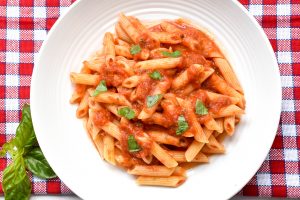
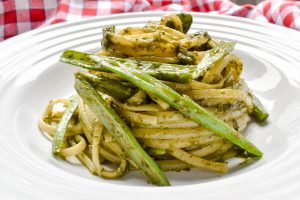 #1 EAT TRADITIONAL
#1 EAT TRADITIONAL
Traditional pasta dish with tomato, the flagship of the Mediterranean diet in the world – try our Penne pasta ‘al pomodoro’ (with Italian tomato sauce).
#2 HEALTH CONSCIOUS
Healthy and light vegetable-based pasta dish – try our Linguini pasta with Genovese pesto sauce.
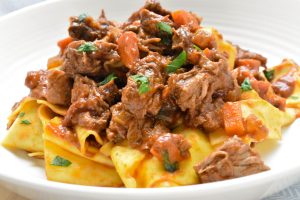
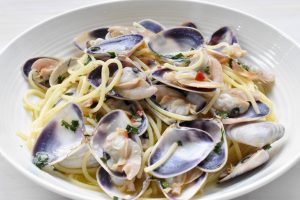 #3 MEAL-LOVERS
#3 MEAL-LOVERS
Looking for a big bowl of comforting pasta? Try our Pappardelle pasta with slow-cooked beef and porcini ragù – it is delicious!
#4 SIMPLE SEAFOOD
Simple yet tasty seafood pasta dish including fresh clams, garlic, chilli and white wine – try our Spaghetti pasta ‘alle vongole’ (with clams).
Discover many more delicious pasta and Italian recipes online at www.italianspoon.com.au
Whatever you do, don’t throw away any left-over pasta. Live la dolce vita by warming up your left-over pasta the following day or my favourite, make a Frittata of spaghetti.
Happy cooking X
Vanessa Bottaro
Vanessa is Creative Director of the Italian Spoon website and Author of The Italian entertaining cookbook, a collection of home-style Italian recipes and tips for entertaining in true Italian-style. In addition to cooking and taking photographs, Vanessa writes the recipes and blogs to bring the love of Italian cooking to life! The collection of recipes and blogs on the website have been inspired by travels to Italy and desire to share what she has learnt from the great ‘Mamma’s and ‘Nonna’s in her life!
Vanessa is an entrepreneur and wife to husband Simone and the mother of two beautiful kids Dante and Mia. Even so she was born and lives in Melbourne Australia, Vanessa has a deep connection to Italy. Perhaps it is the food, or maybe it is because it is the place where Vanessa met the love of her life, Simone to whom she has been happily married for so many years.
Latest posts by Vanessa Bottaro (see all)
- Italian Christmas menu 2022 - December 16, 2022
- 10 Show-Stopping Roast Ideas - November 18, 2022
- Healthy Italian food recipes - November 4, 2022
Recent Posts
-
16 December, 2022Italian Christmas menu 2022
-
18 November, 202210 Show-Stopping Roast Ideas
-
4 November, 2022Healthy Italian food recipes
-
21 October, 2022Tips to cooking the perfect pasta (just like nonna)
-
7 October, 20226 rules to make the perfect homemade Italian soup
